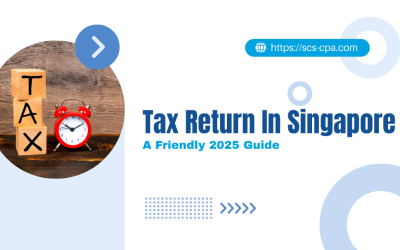
Startups often face difficulty choosing the right business structure, especially in Singapore’s dynamic startup ecosystem. The wrong choice could lead to dire consequences. Many new entrepreneurs have faced bankruptcy, legal issues, or stalled growth. All because they did not select the right framework early on.
Let’s explore each major business structure in Singapore. And, most importantly, what business structure is for you based on your goals and risk tolerance?
Key Considerations Before Selecting a Business Structure

Before you build your startup in Singapore, there are a few things to think about:
What is your type of business and its goals?
Different structures suit different activities and ambitions, from small side hustles to scalable startups seeking investors. Freelancer? A Sole Proprietorship might work. Tech startup aiming for funding? A Pte Ltd is likely best.
What are your funding options?
Consider whether you will self-fund, seek bank loans, or attract investors. If you prefer to be self-funded or bootstrapped, you will have flexibility. Meanwhile, structures like Private Limited Companies facilitate capital raising better (e.g., Private Limited Companies).
If you are new to corporate cash flow, you can read this guide for more information.
Who are your target audiences?
Your audience impacts how much credibility you’ll need. To give you some ideas, sole proprietors may struggle to attract corporate clients. On the other hand, a Pte Ltd status adds professionalism and trust.
Who are your competitors?
Conduct a SWOT analysis (Strengths, Weaknesses, Opportunities, Threats) to understand market positioning and strategic needs. This research will shed light on your niche and help you adapt your business plans.
How much control do you want?
Decide on your preferred level of decision-making and hands-on management:
- Want total control? Go solo.
- Have a vision you wish to share? Consider partnerships or LLPs.
- Need professional management? Pte Ltd with a board.
Are you comfortable taking risks?
Risk appetite plays a big role. Business owners with high risk tolerance may prefer a Sole Proprietor or a GP. Meanwhile, those having low risk tolerance may lean towards the liability protection of a Pte Ltd or LLP.
Common Types of Business Structures in Singapore for Startups

1. Sole Proprietorship
These endeavours do not have a separate legal entity. Meaning, they share the same owner and business.
| Key Breakdown | |
| Ownership and Control | Owned and fully controlled by one individual. |
| Liability | Unlimited personal liability; the owner is liable for all debts and obligations. |
| Taxation | Business income is taxed as personal income at progressive rates. |
| Setup and Compliance | Easy and low cost to set up; minimal ongoing compliance. |
| Pros and Cons |
Pros
Cons
|
| Best for | Freelancers, lifestyle businesses, and low-risk small businesses. |
The Takeaway:
As a solo entity, you have full say on the business and more flexibility. However, this also means that you will bear all the responsibilities and damages. For example, if a partner runs off with funds or the business fails, you are 100% liable.
2. Private Limited Company (Pte Ltd)
Pte Ltds are different entities from their shareholders. Their assets and operations do not overlap with the shareholders’ matters.
| Key Breakdown | |
| Ownership and Control | Owned by shareholders, but directors have more control. |
| Liability | Limited to shareholders’ capital investment; personal assets protected. |
| Taxation | The corporate tax rate is 17%, with tax exemptions available for startups. |
| Setup and Compliance | A more complex setup with annual filing obligations. It requires at least one resident director and a company secretary. |
| Pros and Cons |
Pros
Cons
|
| Best for |
|
The Takeaway
Running a Pte Ltd is a complex process that needs a lot of funds, planning and organisation. You must also be clear about what goes under the company and what is yours. As a precaution, you will have to equip yourself with business, workforce and legal knowledge.
3. General Partnership (GP)
Think of GPs as a crew running a ship, where they share all aspects of it. This includes the catch of the day and a crewmate’s mistake.
| Key Breakdown | |
| Ownership and Control | Owned and managed jointly by 2 to 20 partners. Partners usually equal control unless agreed otherwise. |
| Liability |
Unlimited and shared. All partners are responsible for the debts and actions of
|
| Taxation | Profits are taxed as personal income of individual partners. |
| Setup and Compliance | Simple and inexpensive to set up, but registration is required. |
| Pros and Cons |
Pros
Cons
|
| Best for | Businesses run by trusted partners to share the management and risks (e.g., siblings, long-time collaborators). |
The Takeaway
Since all owners hold equal power and liability, choose your partners wisely. One partner’s mistake could cost you everything. Remember: Everyone has to be on the same page in terms of business strategies and goals. If not, find a middle ground and have open discussions.
4. Limited Partnership (LP)
LPs are business structures made of at least two partners. One is the General Partner, who manages the business with full control and responsibility. The other is the Limited Partner, who provides financial contributions and receives earnings without engaging in the management.
| Key Breakdown | |
| Ownership and Control | At least one general partner manages the business. All other limited partners are passive investors. |
| Liability | General partners have unlimited liability, and limited partners are only responsible for their share of the contribution. |
| Taxation | Like GPs, partners are taxed individually on their share of profits |
| Setup and Compliance | Formal registration and a partnership agreement are needed. Its setup is more complex than GP. |
| Pros and Cons |
Pros
Cons
|
| Best for | Businesses that require passive investors who only want to make monetary contributions without actively managing the company. |
The Takeaway
Like the GPs, choose your partners wisely. For LPs, it is key to identify the preferred control, contributions and engagement of every owner. Furthermore, everyone must be clear about each individual’s strengths, weaknesses, and abilities.
5. Limited Liability Partnership (LLP)
This business structure is a separate legal entity from its partners. It can own property, sue, or be sued in its name. While owners are only responsible for their actions and capital, they can share the company’s management and profits.
| Key Breakdown | |
| Ownership and Control | Partners co-manage the business with no limits to the number of partners. |
| Liability | Partners have limited liability. They are not personally liable for LLP debts or the actions of other partners. |
| Taxation | Partners are taxed individually on their profit shares and will not bear any corporate tax. |
| Setup and Compliance |
|
| Pros and Cons |
Pros
Cons
|
| Best for | Professional firms (e.g., law, accounting, architecture) and startups desire flexible management with liability protection. |
The Takeaway
As a partner of an LLP, you must hold yourself accountable. Always consider how your actions will affect yourself and the company, especially when regulations are involved. If you are unsure, always consult a professional, like SCS.
Which One Fits Me?

Selecting the right business structure sets the foundation for your startup’s future. Whether you are promoting your dream product or offering a service, your structure determines:
- How much liability do you face
- How investors view you
- How you’re taxed
- How fast can you grow
If you are a new startup, you can use this table as a starting point
| You’re … | Best Fit |
| A freelancer, someone doing a side hustle or someone with limited budget and manpower | Sole Proprietorship |
| A founder building a scalable, investable startup | Private Limited Company |
| A professional running a service-based firm with a partner | LLP |
| Looking to collaborate casually with trusted peers | General Partnership |
| Seeking passive investment without full control | Limited Partnership |
More readings: LLP vs Pte Ltd: Which Business Structure is Ideal for You?
Final Thoughts

There is no one-size-fits-all structure, and your plans can change based on your trajectory. So, don’t be afraid to adjust and realign your plans to your business growth. When in doubt, consult with qualified advisors, such as Singapore Corporate Services (SCS) or corporate consultants. They provide end-to-end support, from choosing the right structure to compliance matters and beyond your first year.
Good luck with your startup journey in Singapore!
Sources:
Have A Question?
Connect with us for a free
consultation to begin your
business transformation.
Disclaimer: The information provided in this article is intended for general guidance only and reflects regulations as of the publication date. Given that compliance requirements, processes, and fees may change over time, readers are advised to consult official sources such as ACRA for the most up-to-date information or seek professional guidance from our team.
Understanding the Core Types of Audits and Their Roles in Accounting in Singapore
Learn the key types of audits in Singapore to build trust and stay compliant. Examples are statutory, internal, GST, and forensic.
Tax Return In Singapore: A Friendly 2025 Guide
Want to be a responsible business owner? Read this guide to tax return in Singapore to help understand tax filing and play your part.
How to Change Your Company Name in Singapore
A company's name can significantly shape its identity, yet there are times when a change becomes...



